
May 12th – Hampi
Ayup.
I confess (not for the first time) to having made a slight financial misjudgement on our first day in Hampi. In our eagerness to get to Hampi Bazaar and source some accomodation, we’d neglected to get some more cash out. As the designated carrier of money I’d looked at the wad of notes in our possession as we left Hoispet the previous morning and decided that it was adequate. After paying for three night’s accomodation and three meals on our first day, we were down to the bare bones by the next morning. Hampi Bazaar is such a remote backwater that it does not possess the luxury of an ATM. We convened for crisis talks over breakfast (using 300 of our last 600 rupees to pay). The conversation went something along the lines of “We need to get some money or we’re buggered”. After much deliberation we hatched a plan to rent a couple of pushbikes and cycle to the nearby town of Kamalapura – a measly 3 kilometre ride away. We rented two bikes for fifty rupees each and set off along the road, which climbs the biggest bloody hill in the area. Determined to show no weakness to our usual audience of lithe, athletic Indians, we puffed and panted our way up the hill, freewheeling down the slope on the other side. Flanked by banana trees and with the breeze on our faces we were in high spirits, in spite even of the farm trucks and buses that blared their horns as they came past us. Then we hit the flat. The sun beat down from above and the tarmac reflected it back at us to give us a double whammy of heat. On top of this – and I know you shouldn’t grumble for fifty rupees – but this bike’s gears were inadequate for the task at hand. We took a ten minute pit stop during which we each drank about a litre of water, before soldiering on into the town.
It didn’t take us long to find what we were looking for – two ATM machines side by side, completely incongruous to the ancient stone buildings that surrounded. We had two cards each with which we could withdraw money – none of them worked. We repeated the process three or four times, and an error message appeared each time. This was more than a little concerning – we had 200 rupees remaining. It was agreed that one of us would have to use the last of our cash to take a rickshaw back to the bigger town of Hoispet, whilst the other waited with the bikes. We propped the bikes up against the wall and I sat down next to them whilst Luke went off to find a rickshaw.
No sooner had I sat down than I was accosted by about twenty kids, who seemed to be fascinated by my presence on their turf (metaphorical turf that is – it was actually just a dusty roadside). They asked me questions in broken English, stared at my pallid legs gleaming in the sun, and giggled as they gaggled away to each other in Hindi. I shook each of their hands individually, saying “My name is Tom, how do you do?” to each one in a very ostentatious British accent, whilst they told me their own names. They were all very keen that I should take their photo, which I obliged. The boys posed like Usain Bolt and the girls ran away shyly, and we all had a thoroughly good time. A couple of Dads emerged from their houses to see what the commotion was. They spoke sternly to their kids, I imagine to tell them off for bothering me, but I was quite enjoying the banter so I smiled and nodded at the adults who then seemed satisfied that I wasn’t being unduly harassed. The bravest lad out of the group grabbed one of the bikes that had slid down the wall and propped it up in a better position for me. I thanked him for this and he immediately said “Ten rupees please, sir.” I admired his entrepenuerial spirit but for the first time on the trip I was completely honest when I told him I was completely skint. Luke returned quickly, and the kid’s attention turned to a pen he was holding in his hand. They repeated “Schoolpen sir, schoolpen!” Until he caved to their demands and handed them the pen. I don’t want to sound patronising, but it was a real pleasure just to meet these kids and see how friendly and honest in their curiosity they were. These are the kind of random encounters that can sound hopelessly cheesy when you try to describe them to people afterwards, but I’ve learned quickly that chance meetings with strangers can be the highlight of you travels.
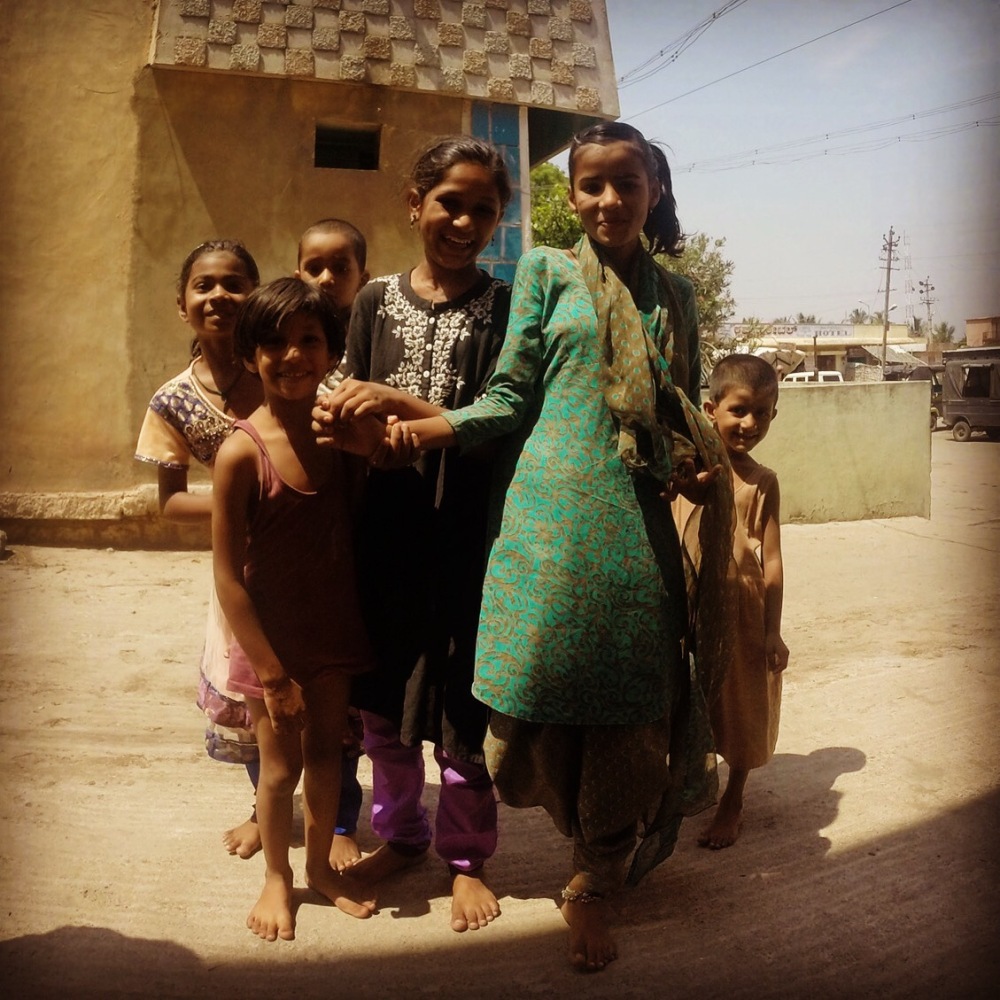
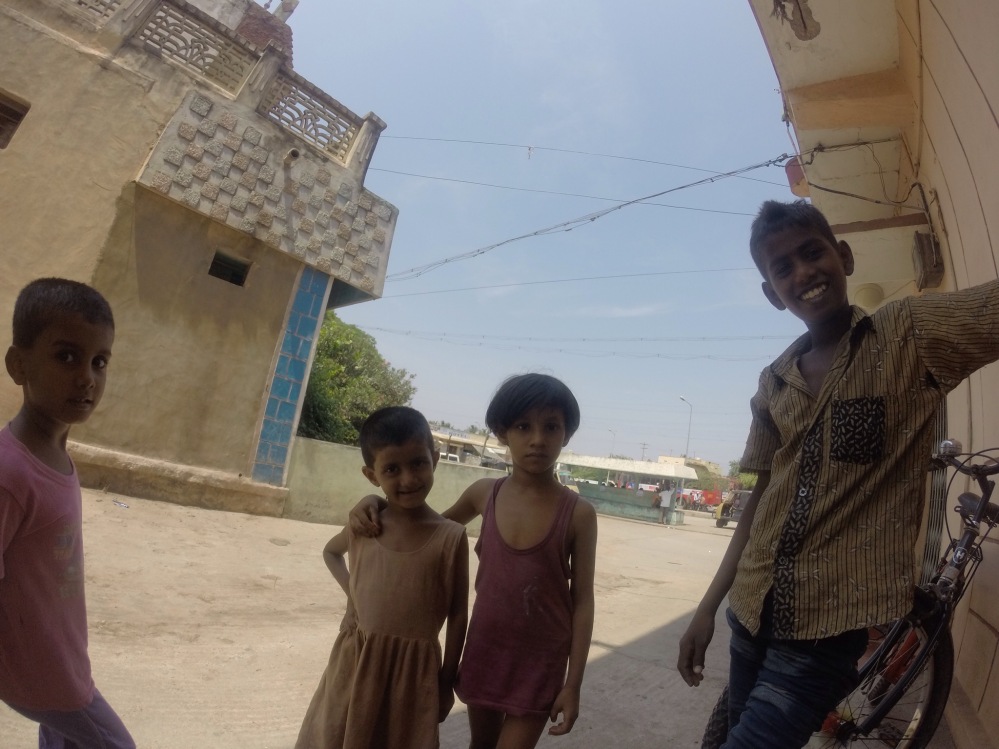
Whilst I’d been chatting and chilling in the shade, Luke had gotten into a dispute with his rickshaw driver, who had driven him all of 200 yards down the road to the next cashpoint and demanded 200 rupees off him for the priveledge. Two quid for a 200 yard journey is extortionate even by British standards, but at least he’d managed to extract a wad of notes. We mounted our bicycles and rode off in the direction of the closest ruins, followed by the kid of the previous paragraph who continued to shout “Ten rupees please sir!” until we left the village.
We left the road and cycled onto an enormous arid plain. Ruins of various stature were situated for as far as the eye can see. We bought ice lollies and re-stocked on water from a vendor who was sat with what must have been his entire extended family under a tree. Feeling suitably replenished, we commenced an onslaught of temple exploration under the taxing heat of the mid-day sun. There were temples, towers and aqueducts, bathing pools and fortifications. Of particular interest to us was a gigantic building within the Zenana Enclosure that stretched about the length of two football pitches. It contained eleven domed chambers with huge arched entrances – these were the elephant stables. This building remained remarkably intact and it didn’t require much imagination to picture these beautiful behemoths being herded under the arches after a hard day’s work, mournfully trumpeting their protests and dropping steaming piles of dung all over the place. In front of the stables was a large field which had apparently been a parade ground for troops of the Vijayanagara empire, but was now being cultivated for crops by a local farmer. The architecture in this area of the ancient city seems to have more of an Islamic influence, which is ironic considering the Vijayanagara spent most of the time fighting off one Muslim empire or another.
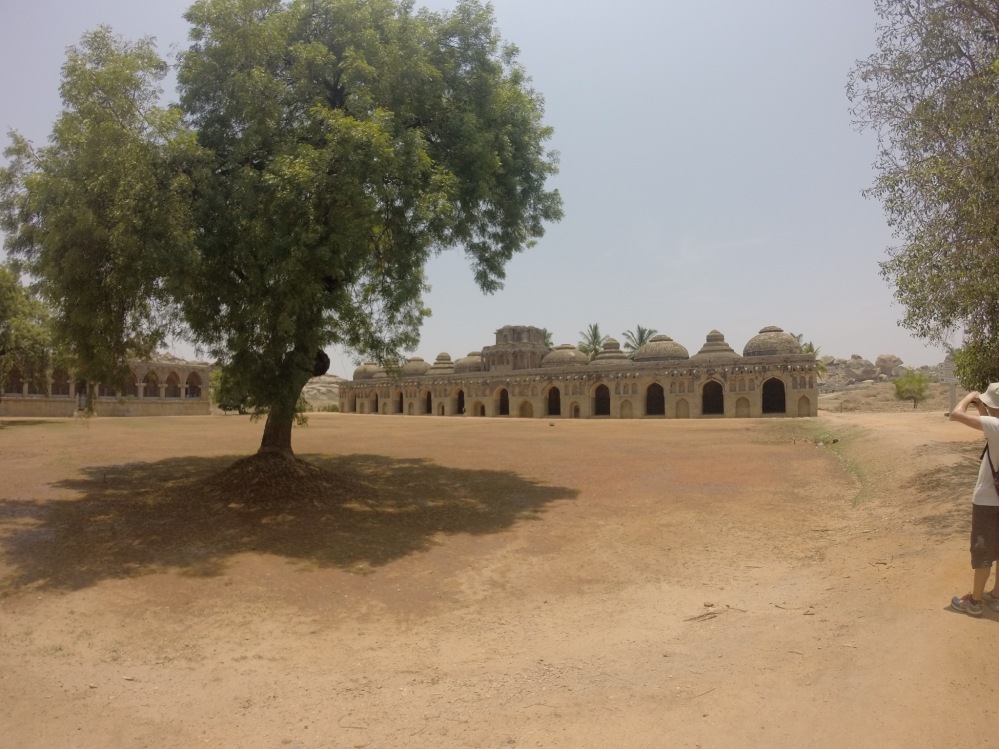
The Elephant Stables
After two or three hours of exploration in which we’d sweated enough to fill the ancient baths back up, we biked it back to Hampi Bazaar. I’d been dreading the ascent of the hill back into Hampi but it turned out okay – neither of us suffered the ultimate amateur cyclist’s shame of having to dismount and push our bikes up the hill. We chilled in the hostel for a while before setting out again for the Vittala Temple – in my opinion not the most photogenic, but certainly the most photographed of all Hampi’s landmarks. The main feature of this temple is a stone sculpture of a chariot called a ratha. The preservation of this monument is remarkable and until the recent past the wheels of the chariot could be spun by hand.
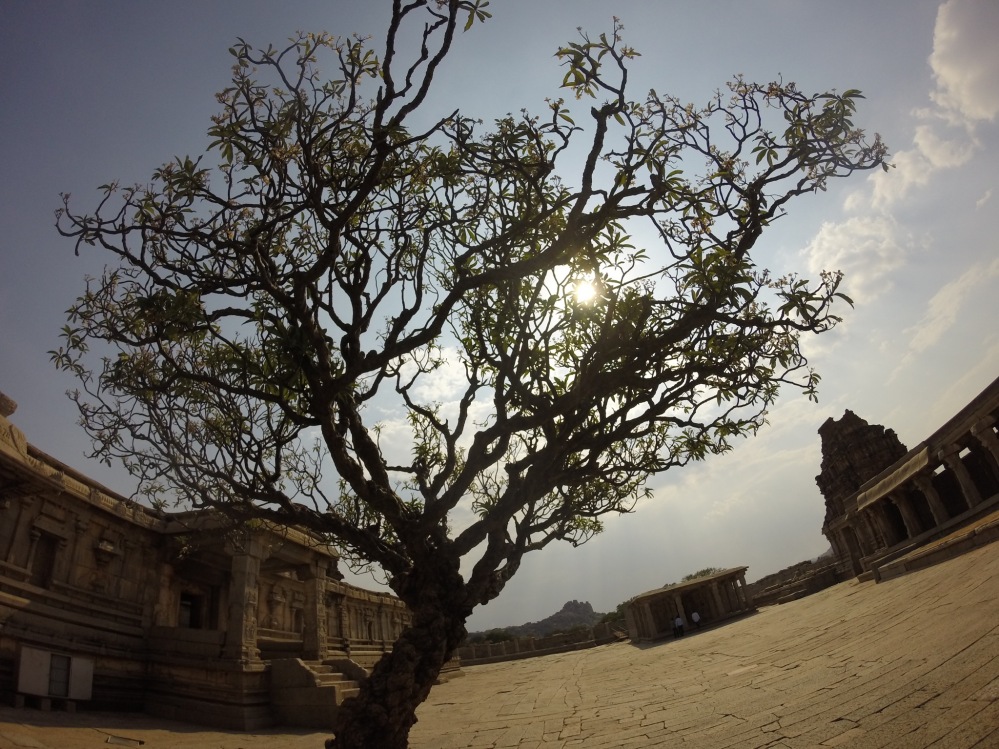
Towards the back of the open temple complex is a roofed building held up by hollow pillars that when tapped emit sounds of various pitches, each one representing a different musical instrument. Luke and I walked around tapping them all but we couldn’t get a tune out of them, and we were distracted in our efforts by yet more curious tourists who insisted on shaking our hands, taking selfies with us and pointing us out to their various family members. The attention and the heat got a little too much and we returned to Hampi Bazaar for tea.
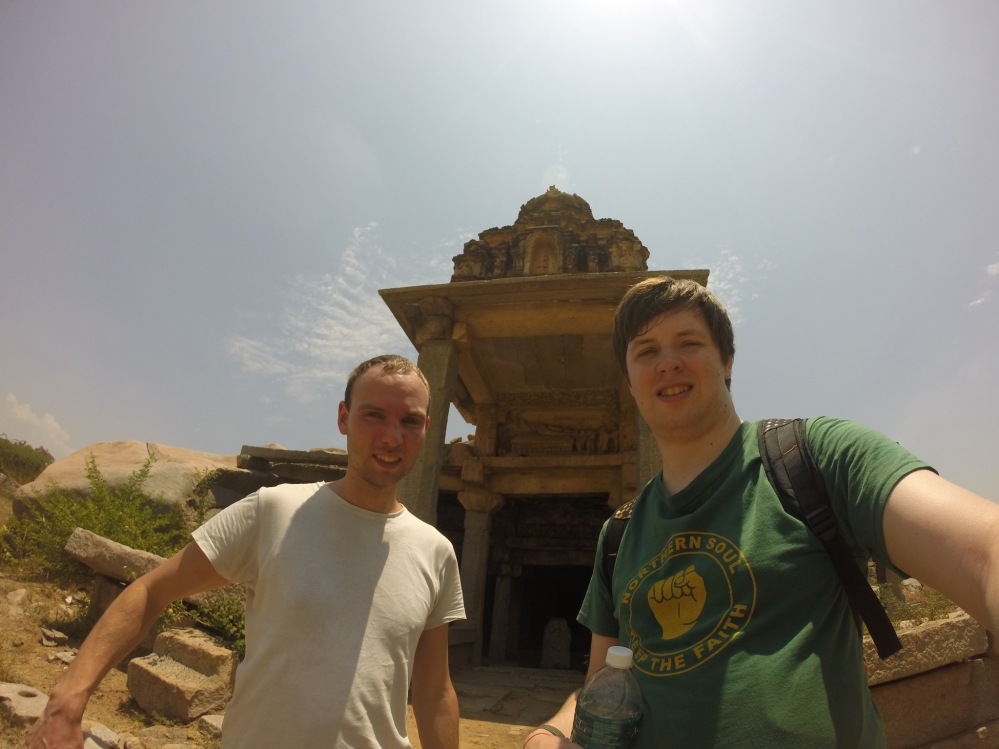
Tomorrow is our last full day in Hampi. We feel that we’ve achieved a lot in our two days here so, so tomorrow we can afford to take it a bit slower and just enjoy the vibe of being in this other-wordly location.
Have a great day, whatever your endeavour.
Tommy and Lukey

